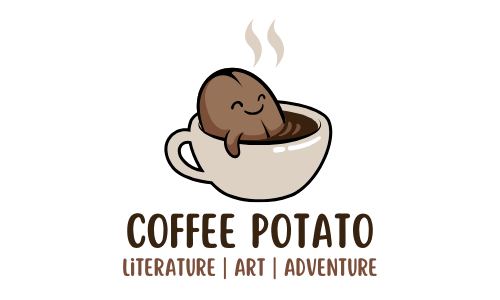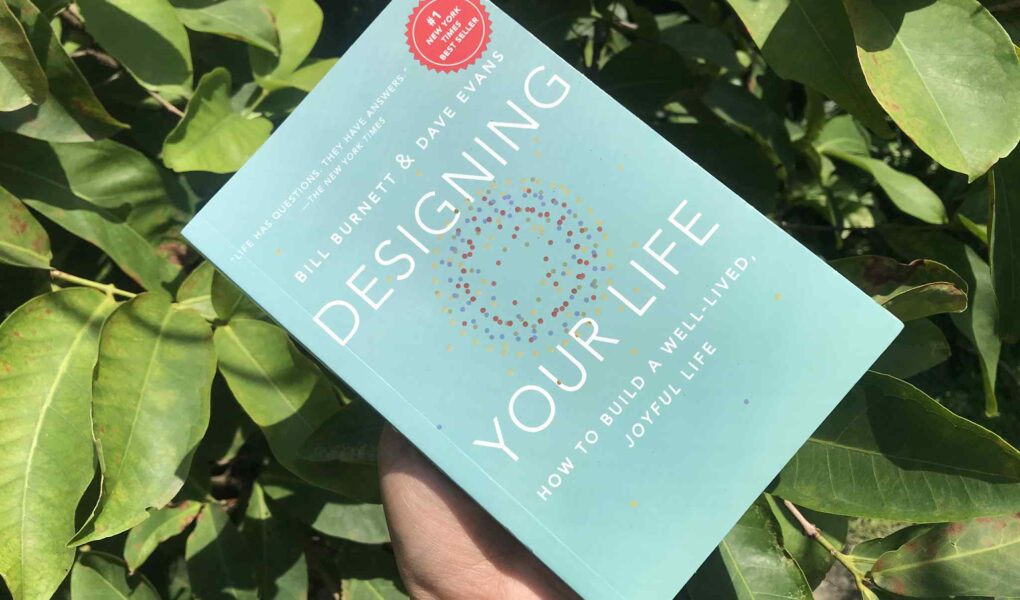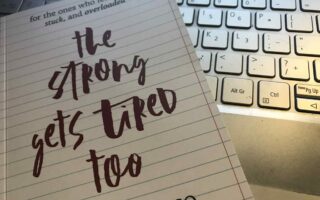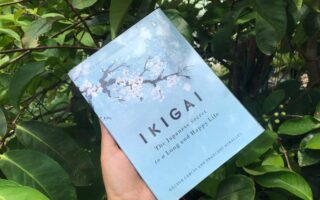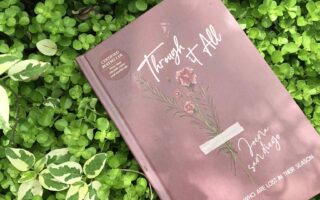A personal reflection on the book that found me while I was quietly rebuilding
I didn’t plan to read Designing Your Life. It wasn’t something I searched for or added to a list. I didn’t even pick it out. Kevin gave it to me. No big intro, no “you have to read this,” no emotional handoff. Just something he handed over one day, like it wasn’t a big deal. I had just finished most of the books I was working through. This one just… ended up in my hands.
At the time, I was somewhere in the middle of things. Not lost exactly, but definitely between versions of myself. I was trying to rebuild my ESL career with more clarity. I was prepping for my MBA comprehensive exams. Still taking on hosting gigs whenever I could, because I still feel most alive with a mic in hand. Parenting solo. Trying to stay on top of the bills. Trying to keep learning and growing and staying kind to myself in the process. Some days were better than others. I wasn’t spiraling, but I wasn’t exactly settled either. It was a quiet kind of chaos.
Then this book asked me to start where I am. Just that. No pressure. Just honesty.
It offered a simple check-in. There are four areas of life you reflect on: Health, Work, Play, and Love. I sat with it for a while. My Work and Play were strong. I was saying yes to things that excited me. I was in motion. But Health? Love? That was different. My sleep wasn’t consistent. My body felt tired more than it should. My ability to pause and care for myself was slipping. And Love, in the broadest sense? That was the area where I was trying to give but not always remembering to receive. The check-in didn’t shame me. It just showed me where I was standing.
The next part of the book asked me to write out two things: my Workview and my Lifeview. What do I believe about work? What do I believe about life? And more importantly, do those two things match? That exercise reminded me of why I started my blog in the first place. Why I wrote From Classrooms to Microphones. Why I’ve been slowly shifting toward work that feels more aligned with who I am, not just what I know how to do. I don’t just want a job. I want work that mirrors my values. I want a life that feels designed by choice, not by pressure.
One chapter was called Wayfinding. It stayed with me. The idea was simple: instead of obsessing about the future, pay attention to the moments when you feel most alive. Not the milestones. Just the day-to-day sparks. I started noticing what lit me up. A good workshop flow. A well-delivered event. A blog post that actually says what I meant to say. Even small wins like Caleb laughing at something ridiculous I said while washing dishes. Those moments matter. I don’t have a 5-year plan, but I do have breadcrumbs. And I’ve been learning to follow them.
Then there was Getting Unstuck. That chapter talked about something called “gravity problems.” Basically, they’re the things in your life that can’t be changed. They just are. And we waste so much energy trying to fight them. That one really sank in. I’ve spent years trying to solve things that were never mine to fix. Systems. Timelines. Expectations that don’t fit the life I’m actually living. This chapter felt like someone gently putting a hand on my shoulder and saying, “Hey, it’s okay to let go of that.”
The exercise that surprised me the most came in the chapter called Design Your Lives. It asked me to imagine three completely different versions of my future. I sat with that for a while. In one version, I was building a quiet ESL career with a side of creative production. In another, I was deep into events work, fully owning the hosting and production space, even mentoring others who wanted to get into it. And in the third, I was abroad again, teaching or writing or designing programs from scratch. Each version felt possible. Each one felt a little like me. And that was the point. I didn’t have to choose. I just had to imagine.
Later, the book talked about prototyping. Not in the techy way, but in a life way. Try something. See how it feels. Adjust. I realized I’ve been doing this all along. Saying yes to a project, then seeing how I feel in it. Reworking my CV to sound more like me. Experimenting with formats in my blog. Tweaking my workflow with Caleb. It’s all design. I just hadn’t named it that before.
The chapters on work were surprisingly soft. They didn’t tell me how to “get a job.” They reminded me that most of the good things come from conversations. From people. From letting others see who you really are, even before you’ve got the job title or the polished version figured out. That made me feel seen. So much of my recent work hasn’t come from perfect applications. It came from connection. From being real with someone and building something together.
Then came Choosing Happiness. And it wasn’t the shallow kind of happiness. It was about coherence. When who you are and what you do start to line up, there’s peace. Not perfection. Not constant joy. But peace. And I started to notice it more. In the routines. In the small rituals. Journaling after Caleb falls asleep. Listening to something soft while making coffee. Rehearsing for a gig and actually feeling excited again. That’s the kind of joy I want to hold onto.
Failure Immunity was about reframing the things that didn’t work. I thought about the gigs that fell through. The days I dropped the ball. The opportunities I tried for and didn’t get. And I started to see them as information. Not proof of my failure. Just data. That shift was gentle but powerful. I’ve failed forward more times than I can count. And that’s okay.
The last chapter talked about building a team. I won’t lie—this part made me pause. Because I’ve spent so much time lately feeling like I have to carry everything alone. But I don’t. Caleb is part of my team. My students, the ones who still message me after class, they’re part of it too. The friends who send quiet check-ins. The clients who come back. And yes, even Kevin, who handed me a book without making it a thing. All of that counts. I don’t have to do this alone. I never did.
This book didn’t hand me a grand solution. It didn’t tell me what to do next. But it gave me a way to frame what I’m already doing. It helped me name the parts of my life that are still taking shape. It reminded me that rebuilding doesn’t have to be dramatic to be meaningful. That a life designed in real-time—with a little honesty, a little courage, and a lot of soft launches—is still a life worth celebrating.
I’m not done designing. But I’m getting better at paying attention.
And maybe that’s enough for now.
